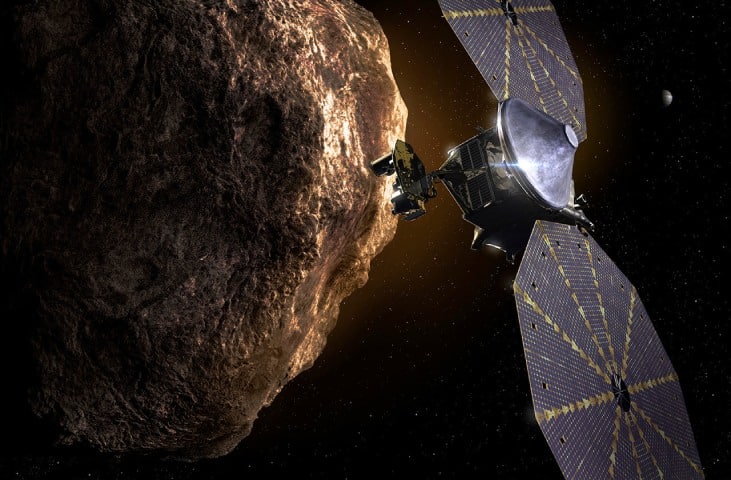NASA’s all set to explore asteroids like never before!
Fri 15 Oct 2021
The first NASA mission to fly by a total of eight ancient asteroids is ready for launch.
Weather conditions will be 90% favorable on the morning of October 16, when the Lucy mission is set to leave Cape Canaveral Space Force Station. In case it doesn’t launch at that time, the window for liftoff remains open for 75 minutes.
Lucy will embark on a 12-year mission to explore Jupiter’s Trojan asteroid swarms, which have not been observed in the past. The Trojan asteroids, which borrow their name from Greek mythology, orbit the sun in two swarms, one that’s ahead of Jupiter, the largest planet in our solar system, and a second one that lags behind it.
So far, our only glimpses of the Trojans have been artist renderings or animations. Lucy will provide the first high-resolution images of what these asteroids look like.
Lucy will be the first spacecraft designed to visit and observe these asteroids, which are remnants from the early days of our solar system. It will help researchers effectively peer back in time to learn how the solar system formed 4.5 billion years ago. Lucy’s 12-year mission could also help scientists learn how our planets ended up in their current spots.
The spacecraft is set to fly by an asteroid in the main asteroid belt between Mars and Jupiter, and then it will explore seven of the Trojans. Over the course of its mission, Lucy will end up swinging back to Earth’s orbit three separate times for gravity assists that can slingshot it on the right path. With this Lucy will be the first spacecraft to travel to Jupiter and return to Earth.
The mission borrows its name from the Lucy fossil, the remains of an ancient human ancestor discovered in Ethiopia in 1974. The skeleton has helped researchers piece together aspects of human evolution, and the NASA Lucy team members hope their mission will achieve a similar feat regarding the history of our solar system.
The Trojans “are held there by the gravitational effect of Jupiter and the sun, so if you put an object there early in the solar system’s history, it’s been stable forever,” said Hal Levison, the principal investigator of the Lucy mission, based at the Southwest Research Institute in Boulder, Colorado.
Both the fossil and the mission are a nod to the Beatles tune “Lucy in the Sky With Diamonds,” which is why the logo for the Lucy mission includes a diamond.
NASA’s Lucy mission will explore seven Trojan asteroids. This illustration shows the binary asteroid Patroclus/Menoetius, Eurybates, Orus, Leucus, Polymele, and the main-belt asteroid Donald Johanson.
Eurybates is not one of the Trojans, but it was chosen because it’s the largest remnant of an ancient massive collision, meaning that it could reveal a look at what’s inside an asteroid. Observations made using the Hubble Space Telescope found that the small asteroid named Queta is a satellite of Eurybates.
Lucy will use three science instruments to study the asteroids, including color and black-and-white cameras, a thermometer, and an infrared imaging spectrometer to determine the composition of the asteroids’ surface materials. The spacecraft will communicate with Earth using its antenna, which also can be used to help determine the masses of the asteroids.
.
The instruments will enable the science team to search for moons around these asteroids as well as craters on their surfaces, which can help determine their ages as well as the origin and evolution of the asteroids.
Once the Lucy mission has finished, the team plans to suggest an extended mission to explore more Trojans. The spacecraft will remain in a stable orbit that retraces the path of its exploration between Earth and Jupiter, and it won’t have a chance of colliding with either for over 100,000 years.
Source: Agencies

 Apr 28 2024
Apr 28 2024













